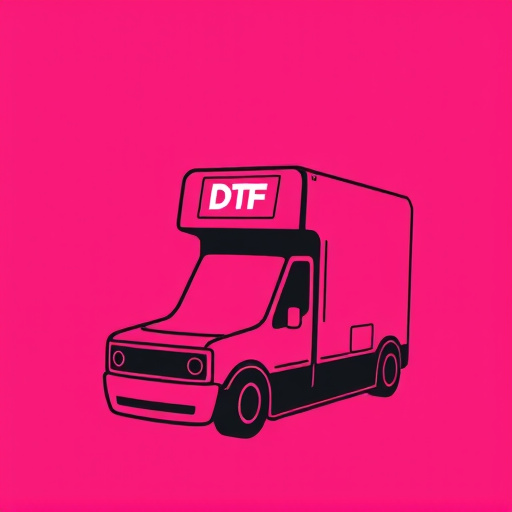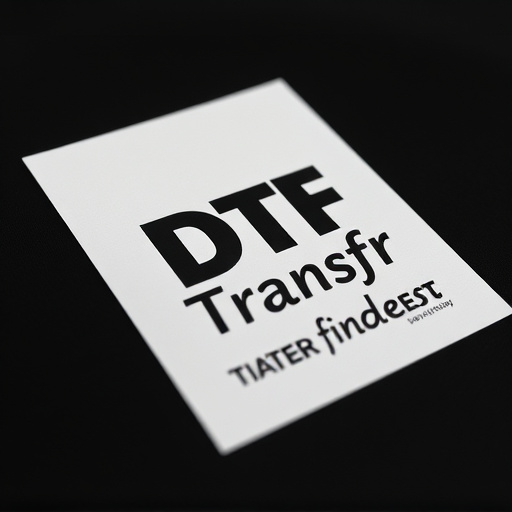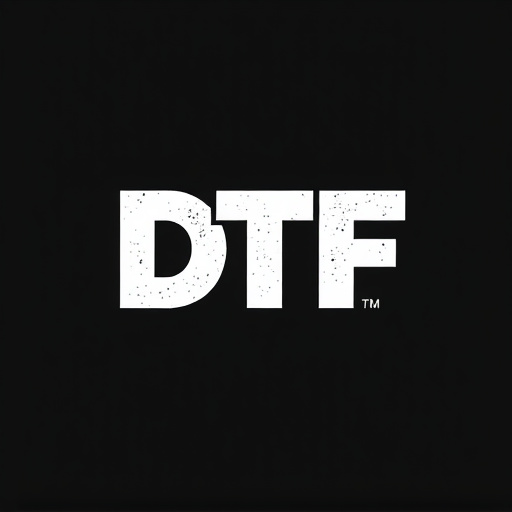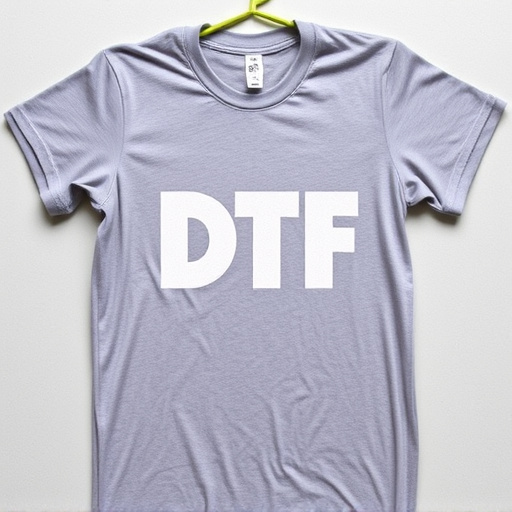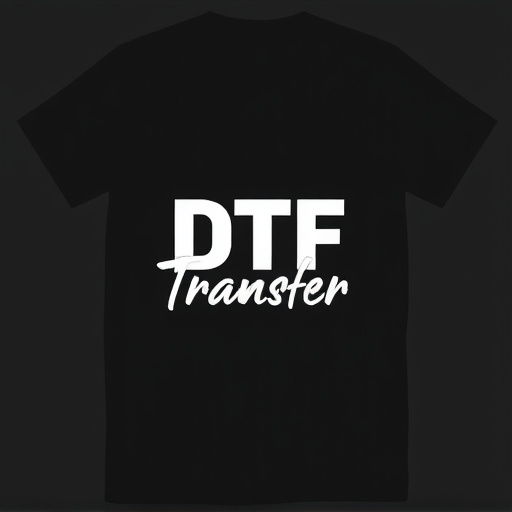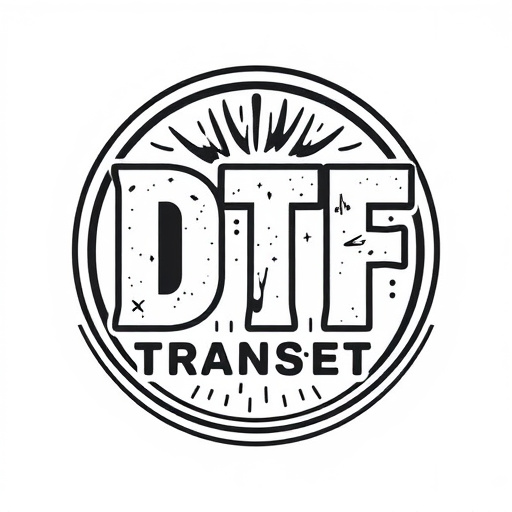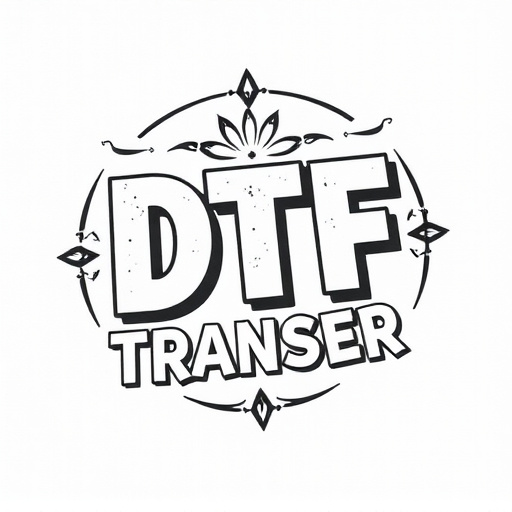DTF Prints (Direct-to-Textile Printing) revolutionize fabric design with high-quality imaging on stretchy materials, ideal for athletic wear, activewear, fashion accessories, and home decor. Digital Thermal Transfer (DTT) technology heats and transfers ink from a film to fabric, preserving durability and elasticity while achieving vibrant colors and intricate details. This game-changing method offers vast creative potential in fashion and home decor, with applications in enhanced movement, comfort, visual appeal, and tactile interest. Key material considerations include polycarbonate films and flexible inks compatible with various fabrics, ensuring long-lasting prints resistant to fading during stretching. The future of DTF printing promises sustainable practices and advanced materials for smart fabrics with functional capabilities.
The world of flexible printing is experiencing a revolution with Digital Thermal Transfer (DTF) technology. This cutting-edge method introduces an exciting new era of DTF prints, enabling seamless integration with stretchy fabrics. By understanding this innovative process, we unlock endless creative opportunities in garment and textile design. From material selection to advanced printing techniques, this article explores the complete spectrum of DTF prints, offering insights into the future of flexible film transfers that move with fabric.
- Understanding DTF Prints: A New Era in Flexible Film Transfers
- The Innovation: How DTF Technology Enables Stretchability
- Applications: Unlocking Creative Possibilities with Stretchy Fabrics
- Material Considerations: Choosing the Right Substrates and Inks
- Printing Process: Techniques for Achieving Crisp, Durable Prints on Flexible Media
- Future Prospects: Trends and Impact in the Garment and Textile Industry
Understanding DTF Prints: A New Era in Flexible Film Transfers

DTF Prints, or Direct-to-Textile Printing, represent a groundbreaking advancement in the realm of flexible film transfers. This innovative technology allows for high-quality imaging directly onto stretchy fabrics, opening up a new era of design possibilities. Unlike traditional methods that often struggle with the flexibility and movement of fabric, DTF Prints seamlessly integrate with these dynamic materials.
The beauty of DTF lies in its ability to reproduce intricate details and vibrant colors while maintaining the fabric’s stretch and durability. This makes it an ideal solution for a variety of applications, from athletic wear and activewear to fashion accessories and even home decor. By embracing DTF Prints, manufacturers and designers can create products that not only look stunning but also perform exceptionally well under various conditions.
The Innovation: How DTF Technology Enables Stretchability
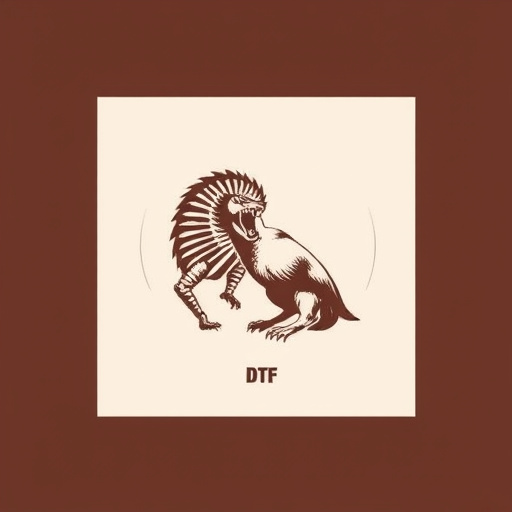
The innovation behind flexible film transfers lies in Digital Thermal Transfer (DTF) printing technology, which has revolutionized the way we think about applying prints to stretchy fabrics. DTF Prints offer a unique solution by enabling direct application of intricate designs onto elastic materials without compromising their flexibility or durability. This method involves heating and transferring ink from a donor film to a receiving fabric, allowing for precise positioning and vibrant colors, even on curved surfaces.
With traditional printing techniques, achieving stretchability on fabrics could result in either limited design options or reduced material elasticity. DTF technology overcomes these challenges by using a thin film that moves with the fabric, ensuring the print remains intact even during stretching and contracting. This makes it an ideal choice for athletic wear, activewear, and other dynamic clothing where both comfort and style are paramount.
Applications: Unlocking Creative Possibilities with Stretchy Fabrics

Flexible film transfers that move with stretchy fabrics open up a world of creative possibilities, especially in the realm of DTF (Direct to Fabric) prints. This innovative technology allows for unique and dynamic designs on textiles, pushing the boundaries of traditional printing methods. From fashion to home decor, the applications are vast and exciting.
Clothing designers can create garments with intricate, stretchable patterns that enhance movement and comfort. Imagine activewear with vibrant, fluid designs that dance along with the wearer during their workout routine. Similarly, interior designers can transform ordinary fabric into stunning wall art or upholstery with flexible film transfers, offering both visual appeal and tactile interest. The versatility of this technology promises to revolutionize not just how we print on fabrics, but also the very concept of wearable and decorative art.
Material Considerations: Choosing the Right Substrates and Inks

When creating flexible film transfers for stretchy fabrics, material considerations are paramount. The choice of substrates and inks plays a crucial role in ensuring the final product’s durability and aesthetic appeal. For DTF (Direct to Film) prints, a key consideration is selecting materials that can stretch and contract without cracking or peeling. This often means opting for flexible polycarbonate films known for their exceptional strength-to-weight ratio and resistance to environmental factors.
Inks used should also be designed specifically for flexible printing, offering vibrant colors and high opacity to prevent show-through on the fabric’s surface. Additionally, they must adhere strongly to the film substrate while maintaining flexibility, ensuring the transfer remains intact during wear and movement. The compatibility of inks with various fabrics is essential, as different textiles have unique properties that can affect ink absorption and adhesion.
Printing Process: Techniques for Achieving Crisp, Durable Prints on Flexible Media
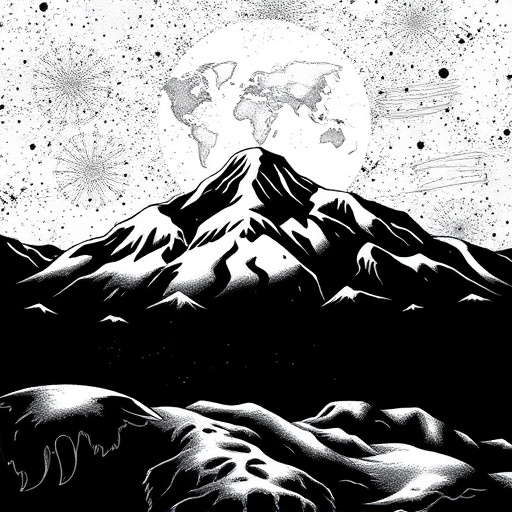
The printing process for flexible film transfers, often referred to as DTF (Direct to Film) prints, involves advanced techniques to ensure crisp and durable images on stretchy fabrics. This technology allows for intricate designs and vibrant colors to be seamlessly integrated into fabric, making it a favorite among fashion designers and textile artists. One of the key methods is utilizing specialized inkjet printers that can precisely deposit inks onto flexible substrates. These printers are calibrated to handle various media types, ensuring optimal image quality.
Additionally, the choice of ink plays a vital role in achieving durable DTF prints. High-performance inks formulated for flexible materials offer excellent adhesion and resistance to fading, even when subjected to stretching and movement. This involves selecting inks with robust binders that can latch onto the fabric’s surface securely. By combining precise printing techniques and suitable inks, manufacturers can produce long-lasting, high-resolution prints that move and stretch along with the fabric, preserving their visual appeal over time.
Future Prospects: Trends and Impact in the Garment and Textile Industry

The future of flexible film transfers looks promising, especially with their growing impact on the garment and textile industry. As technology advances, we can expect to see more innovative applications of DTF (Direct to Fabric) prints, which offer unparalleled versatility and design possibilities. The ability to create stretchable, durable fabrics with intricate patterns and vibrant colors opens up a world of creative opportunities for designers and manufacturers.
Trends suggest that sustainable and eco-friendly practices will play a significant role in shaping the industry’s future. With an increasing demand for environmentally conscious products, flexible film transfers can contribute to reducing waste and minimizing the ecological footprint of textile production. Moreover, the integration of advanced materials and printing techniques may lead to the development of smart fabrics with functional properties, such as moisture-wicking, self-cleaning, or even shape-shifting capabilities, further expanding the possibilities for both fashion and performance attire.

